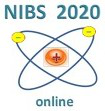Speaker
Description
Large-scale sources for negative hydrogen (or deuterium) ions are used in some present and many future fusion devices in neutral beam injectors (NBI). Several test facilities contribute to the development of the RF source for the ITER-NBI in order to achieve simultaneously the ITER requirements, e.g. beam pulse of 3600 s, beam current density of 286 A/m2 and co-extracted electron current lower than the ions in deuterium operation at ITER-relevant sources: among them are BATMAN Upgrade (BUG) and ELISE at IPP. Filament-arc (FA) negative ion sources are routinely operated at the NBIs of the Large Helical Device at NIFS. Beside the discharge type, these sources differ in their required parameter range as well as in certain parts of their design, e.g. the existence of a bias plate, magnetic field configurations, and the design of the extraction system, in which the plasma grid (PG) is the plasma-facing component.
In order to gain a better understanding of the influence of the PG design on the plasma and beam properties, a comparison between the NIFS and ITER-like PGs at IPP was started at BUG by a NIFS-IPP international collaboration. The NIFS-type PG is thinner (4 mm) and has a shallower conus around the extraction apertures compared to the ITER-like PG normally used at BUG (thickness of 9 mm and deeper conus). The distance between the PG and the second grid (extraction grid, EG) is kept constant. Hence, due to the different thickness of the PGs, the field strength of the electron deflection magnets (EDM, mounted in the EG) in the plasma close to the PG is stronger for the NIFS-PG. Thus, an influence on the co-extracted electron current is expected. The different conus geometry may impact the transport of negative ions in the plasma as well as the formation of the plasma meniscus (i.e. the transition between plasma and extracted beam), and thus impact the beam optics. For this comparison, source plasma parameters were measured at 32 mm and 27 mm distance upstream of the PG surface in the NIFS and ITER-like PG cases, respectively (difference results from the different PG thickness). This position is outside of the EDM field loop. Initial results have been successfully obtained in hydrogen operation. Similar source plasma parameters with only minor differences were observed, such as local positive ion density in the range of 1x1017 m-3 (measured by Langmuir probes) and line-averaged negative-ion density of 3 to 4x1016 m-3 (measured by Cavity Ring-Down Spectroscopy) for both PGs at a filling pressure of 0.3 Pa, discharge power of 64 kW, extraction voltage of 5 kV, acceleration voltage of 32.5 kV, PG filter current of 1.5 kA (approximately 3 mT on the PG upstream surface), and bias current of 5 A. The extracted ion current density is with 125 A/m2 similar for both PGs, as well as the divergence, measured by Beam Emission Spectroscopy collecting signal from many beamlets. Consequently, it needs to be considered that the respective value of the divergence is strongly affected by the row-wise zig-zag-deflection caused by the EDM field. In contrast, the co-extracted electron current with the NIFS-PG was approximately three times higher than that with the ITER-like PG. An increase of the PG current by approximately 1 kA is necessary for the NIFS-PG to obtain an equivalent co-extracted electron current as for the ITER-like PG. Further systematic investigations will follow, among them also a comparison in deuterium operation, within the scope of the NIFS-IPP international collaboration.
This study was supported by JSPS KAKENHI Grant number 19H01883 and 18KK0080, and NIFS (KEIN1606 and UFEX105).

